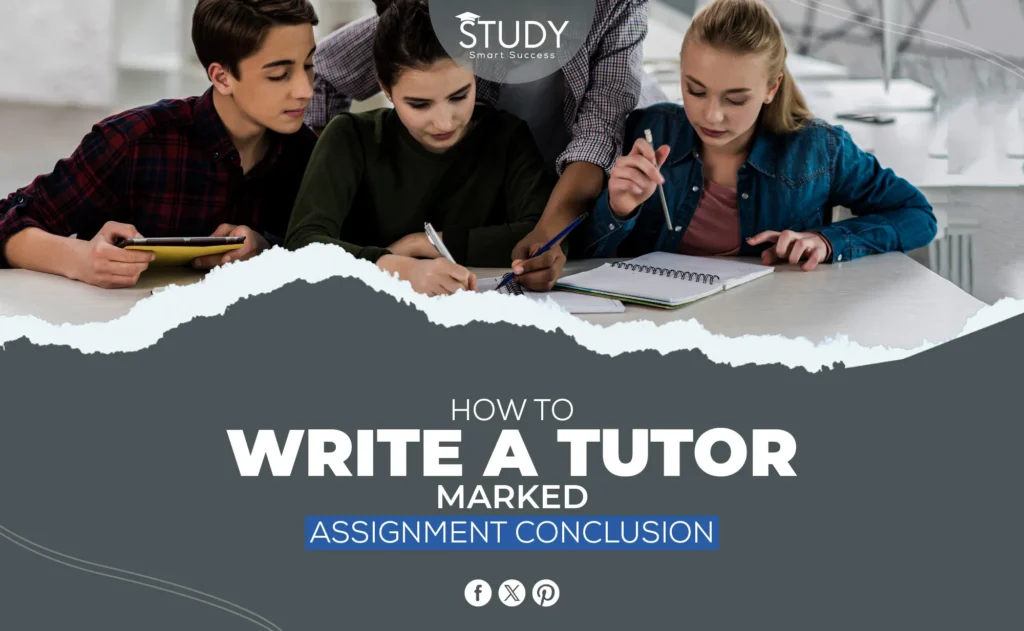Introduction
Tutor-Marked Assignment, more commonly abbreviated to TMAs, are an indispensable part of the educational experience in the academic world. Students are allowed to demonstrate that they have a firm grip on the content covered in class, and teachers gain valuable insight into the extent to which their students understand the material.
The conclusion, on the other hand, is a component of TMA writing that is frequently neglected. Putting together a conclusion that covers all bases and is well-rounded can make a big difference in the overall impact of your assignment. In this piece, we will walk you through the process of writing an impactful ending for your TMA that will stay with your readers long after they finish reading it.
Understanding the Purpose of the Conclusion
Before delving into the specifics of how the TMA conclusion is put together, it is necessary to have a firm understanding of the role that it plays in the overall analysis. The conclusion is the very last element of your work, and for it to be successful in performing its duties, it needs to be able to accomplish the following:
1. Summarize Key Points
In the conclusion of your TMA, it is vital to provide a concise summary of the primary themes that you have discussed during the entirety of the project. This review serves as a synopsis, which ensures that your audience has a clear and immediate knowledge of the most important lessons from your work.
You are not only offering clarity but also reinforcing the primary signals that are being conveyed by your assignment when you emphasize these main elements again and again. This reinforcement can serve to strengthen your argument or the information that you’ve delivered, making it more memorable and influential for the people who are listening to you.
A conclusion that is well-organized and provides an effective summary of these major ideas has the potential to leave a long-lasting impression and to improve the quality of your TMA as a whole.
2. Restate the Thesis
To make your TMA conclusion as effective as possible, you may consider restating the primary argument or thesis statement. It serves to remind readers of the significance and utility of the assignment by reinforcing the primary message that you have been trying to get over throughout the entire thing. This method of deliberate repetition helps to ensure that your audience will firmly connect with the message you are trying to convey.
3. Offer Insights
In the conclusion of your TMA, if you offer any further insights or thoughts, you have the opportunity to demonstrate that you have a deeper knowledge of the subject matter. It allows you to move beyond the discussion at the surface level and demonstrate your competence on the subject. Your assignment will have a higher overall quality as a result of this, and your readers will be more profoundly engaged.
4. Leave a Lasting Impression
The final portion of your TMA, the conclusion, should be written to have a strong influence on the person reading it. They ought to be prompted to participate in thought, reflection, or contemplation regarding the wider ramifications of the subject matter as a result of this. This enduring impression not only reaffirms the most important points of your project but also encourages readers to carry these ideas forward, which contributes to a deeper comprehension of the topic at hand.
Crafting an Effective TMA Conclusion
Now that we understand the function of a conclusion, let us analyze how to effectively write one; the following are some important considerations to keep in mind:
1. Keep It Concise
It’s important to keep a Tutor Marked Assignment (TMA) end short. It should be short and to the point, and it shouldn’t include any new ideas or information. Instead, its main goal is to summarize and restate the main points and arguments that were already made in the task. This way of writing will make sure that your conclusion is a summary that reinforces the main points of the task without going off in a new direction.
2. Emphasize Key Points
Make it a top priority, when writing the conclusion to your TMA, to emphasize the most important aspects of the task. Use language that is simple and direct to emphasize these essential lessons, and you will increase the likelihood that your readers will connect strongly with them. Your conclusion has a greater overall impact as a result of its clarity and its emphasis on the most important aspects.
3. Relate to the Introduction
It is crucial to refer to the beginning of your TMA when writing the conclusion for it to produce a feeling of completion. You will have shown that your conclusion is in line with the initial questions or objectives that you gave at the beginning of your assignment if you have done this. This connection between the opening and end helps generate a smooth narrative and reinforces the overall aim of the project.
4. Offer a Personal Insight
Your TMA conclusion will have more character and be more interesting if you include a personal insight or perspective that you’ve had. It demonstrates a more in-depth study of the subject matter and lends a more personal tone to your overall conclusion. Because of this personal touch, your conclusion has the potential to be more memorable and relatable to the people who have read it.
Conclusion
Finally, every student should work hard to learn how to write an interesting ending for a Tutor Marked Assignment (TMA). If you understand what the conclusion is for and follow the tips in this piece, you will be able to make your assignments better. Remember that a well-structured TMA conclusion should quickly go over the most important points, restate the main idea, give useful information, and leave a lasting impact on the readers.
As you start your academic journey, think about how important these last parts of your tasks are. They’re not just formalities; they’re strong chances to reinforce your message, get people interested, and show that you know more about the subject. In the end, a well-written TMA conclusion can make the difference between a task that just meets the requirements and one that stands out. Now that you know these tips, write with purpose, and give your readers an ending they won’t forget.
FAQs
Q1: Is the conclusion the most critical part of a TMA?
A well-written conclusion can have a big effect on your teacher and make your whole assignment better, even though the body of your TMA is more important.
Q2: Should I introduce new ideas in the conclusion?
No, the conclusion shouldn’t bring up any brand-new points or concepts. It ought to recap and restate the primary ideas that were covered throughout the assignment.
Q3: Can I use a quote in my TMA conclusion?
The use of a relevant quote can be helpful if it contributes to the development of your conclusion and strengthens your primary ideas. Just make sure to give credit where credit is due for the quote.
Q4: How long should a TMA conclusion be?
The conclusion of a TMA should be concise and make no more than ten percent of the total word count of the project. However, quality should take preference over quantity.
Q5: Can I personalize my TMA conclusion?
Your conclusion has the potential to be more interesting and memorable if you include a personal insight or reflection that is connected to the subject matter.





